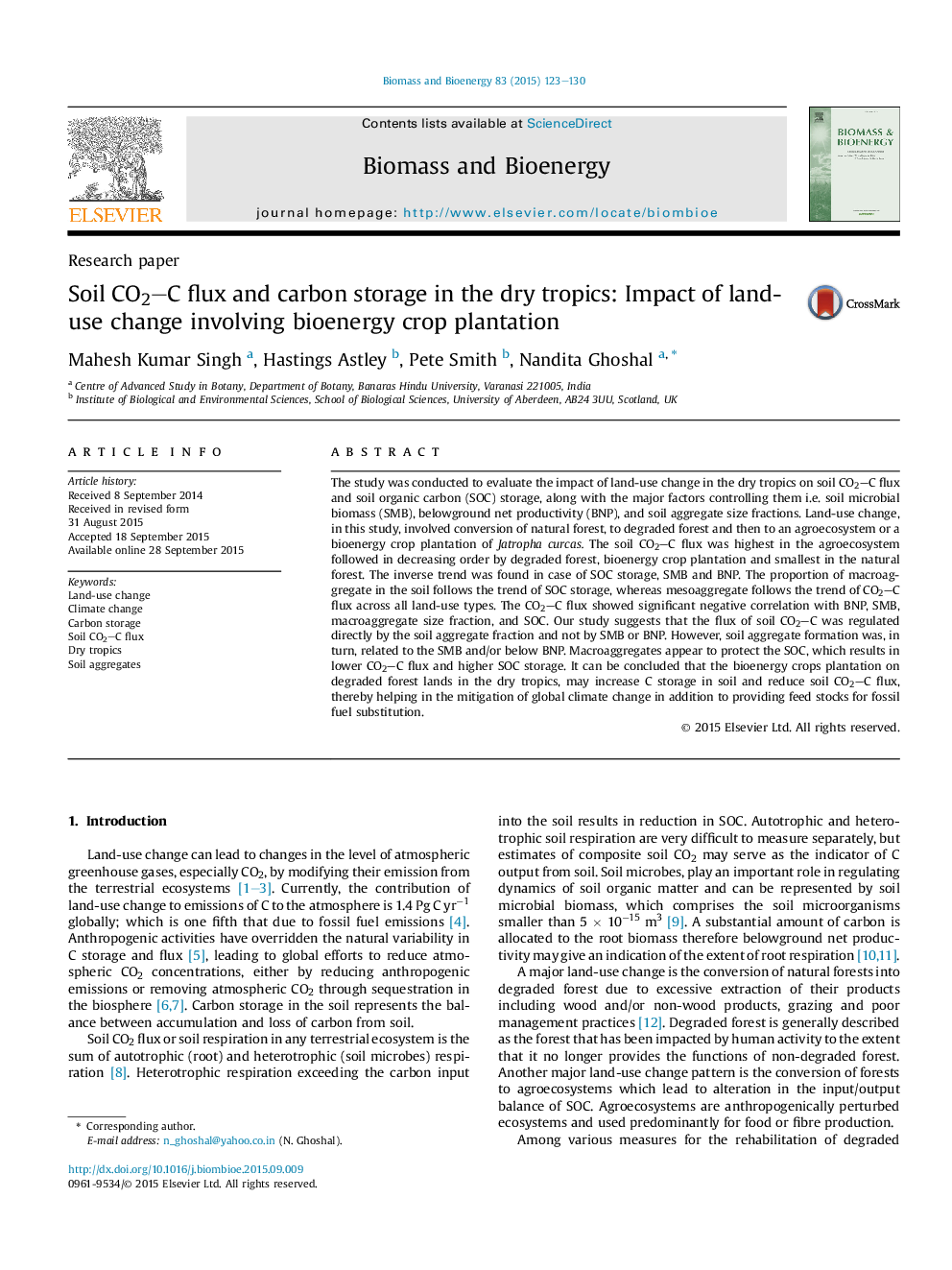| Article ID | Journal | Published Year | Pages | File Type |
|---|---|---|---|---|
| 7063623 | Biomass and Bioenergy | 2015 | 8 Pages |
Abstract
The study was conducted to evaluate the impact of land-use change in the dry tropics on soil CO2-C flux and soil organic carbon (SOC) storage, along with the major factors controlling them i.e. soil microbial biomass (SMB), belowground net productivity (BNP), and soil aggregate size fractions. Land-use change, in this study, involved conversion of natural forest, to degraded forest and then to an agroecosystem or a bioenergy crop plantation of Jatropha curcas. The soil CO2-C flux was highest in the agroecosystem followed in decreasing order by degraded forest, bioenergy crop plantation and smallest in the natural forest. The inverse trend was found in case of SOC storage, SMB and BNP. The proportion of macroaggregate in the soil follows the trend of SOC storage, whereas mesoaggregate follows the trend of CO2-C flux across all land-use types. The CO2-C flux showed significant negative correlation with BNP, SMB, macroaggregate size fraction, and SOC. Our study suggests that the flux of soil CO2-C was regulated directly by the soil aggregate fraction and not by SMB or BNP. However, soil aggregate formation was, in turn, related to the SMB and/or below BNP. Macroaggregates appear to protect the SOC, which results in lower CO2-C flux and higher SOC storage. It can be concluded that the bioenergy crops plantation on degraded forest lands in the dry tropics, may increase C storage in soil and reduce soil CO2-C flux, thereby helping in the mitigation of global climate change in addition to providing feed stocks for fossil fuel substitution.
Related Topics
Physical Sciences and Engineering
Chemical Engineering
Process Chemistry and Technology
Authors
Mahesh Kumar Singh, Hastings Astley, Pete Smith, Nandita Ghoshal,
